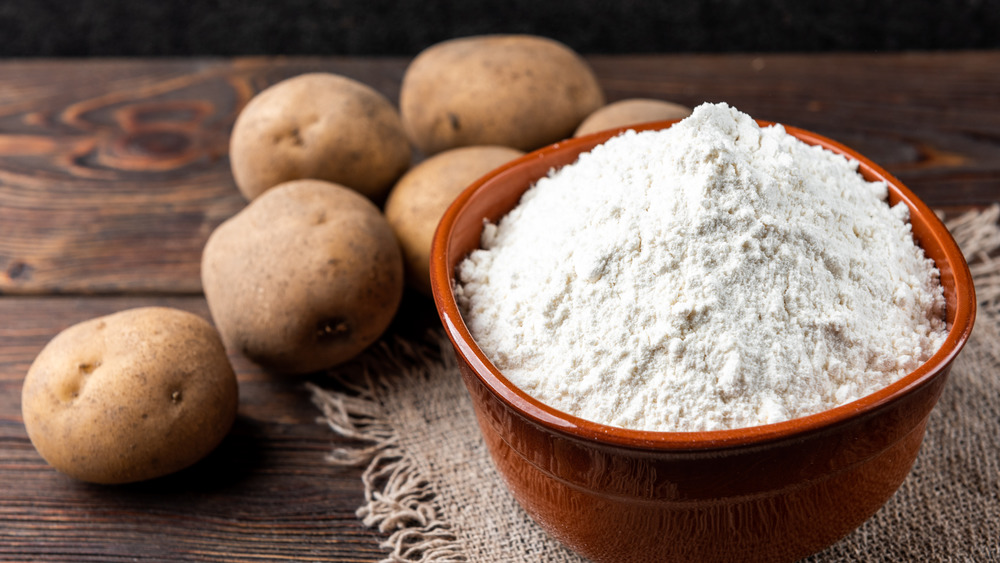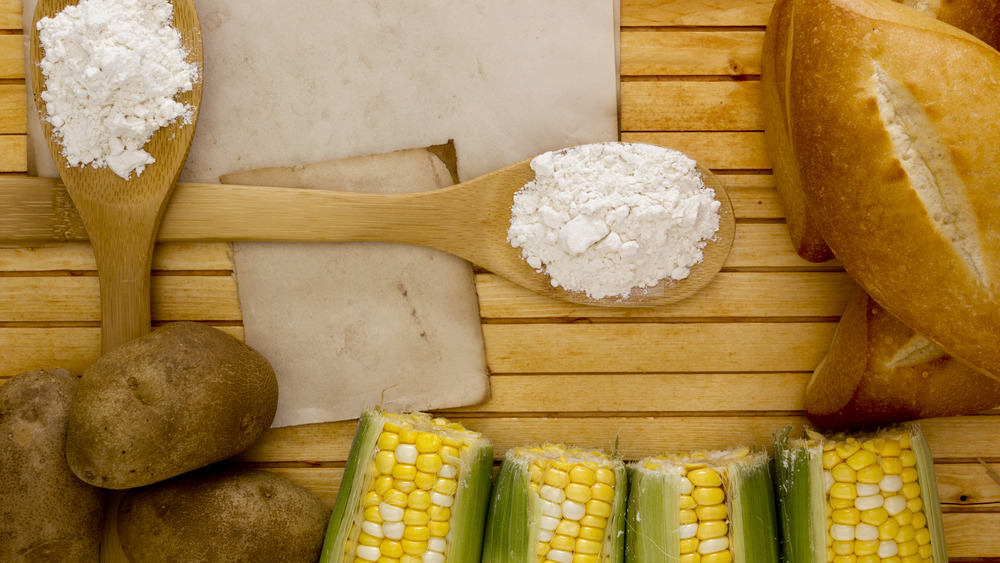What Is Potato Starch And How Do You Use It?
You may be familiar with cornstarch, but fewer home cooks and bakers are familiar with potato starch. Similar in powdery appearance, and only derived from potatoes, potato starch is used in sauces and soups as a thickening agent, as a dredge for some fried and baked goods, and also as a necessary addition to many gluten-free baking projects (via Bakerpedia).
Potato starch is nothing new, though; in the 17th century, farmers in Europe derived starch from potatoes for use in laundering, while the wealthy would use it as a powder for wigs and faces. In a culinary setting, potato starch is pretty flavorless, making it useful in just about any cuisine, and it doesn't really have any nutritional value (via Bob's Red Mill). However, despite the lack of nutritional value, potato starch comes with a unique set of benefits that may persuade you to add this dry good to your pantry, either in place of or beside your cornstarch.
Why and when to prefer potato starch to cornstarch
There are a few things that set potato starch apart from cornstarch, according to Bob's Red Mill. For one, potato starch tolerates higher temperatures, making it more suitable for use in baking. "When added to baked goods, potato starch acts as a binding agent and results in a moist and chewy texture," Bob's Red Mill adds. Additionally, potato starch prevents liquid separation, so it's equally handy in dishes that will be cooled before eating (via Yummy). Potato starch also often results in sauces or other liquids that have a glossy, silky sheen, if that's the appearance you're going for.
Beyond using your potato starch for gluten-free baking (don't worry about making the correct substitutions; if you have a true gluten-free recipe, it will tell you how much potato starch to use alongside other gluten-free flours and starches) and for thickening sauces and stews, you can also use your potato starch for dredging meats and vegetables before frying (via Kitchen Stories). This will result in a crispier crust. It also works as an alternative to flour in custards or as a thickener in pie or tart fillings. Yet another use for potato starch? Chef J. Kenji López-Alt swears by potato starch as a trick to make the perfect, fluffy scrambled eggs.

